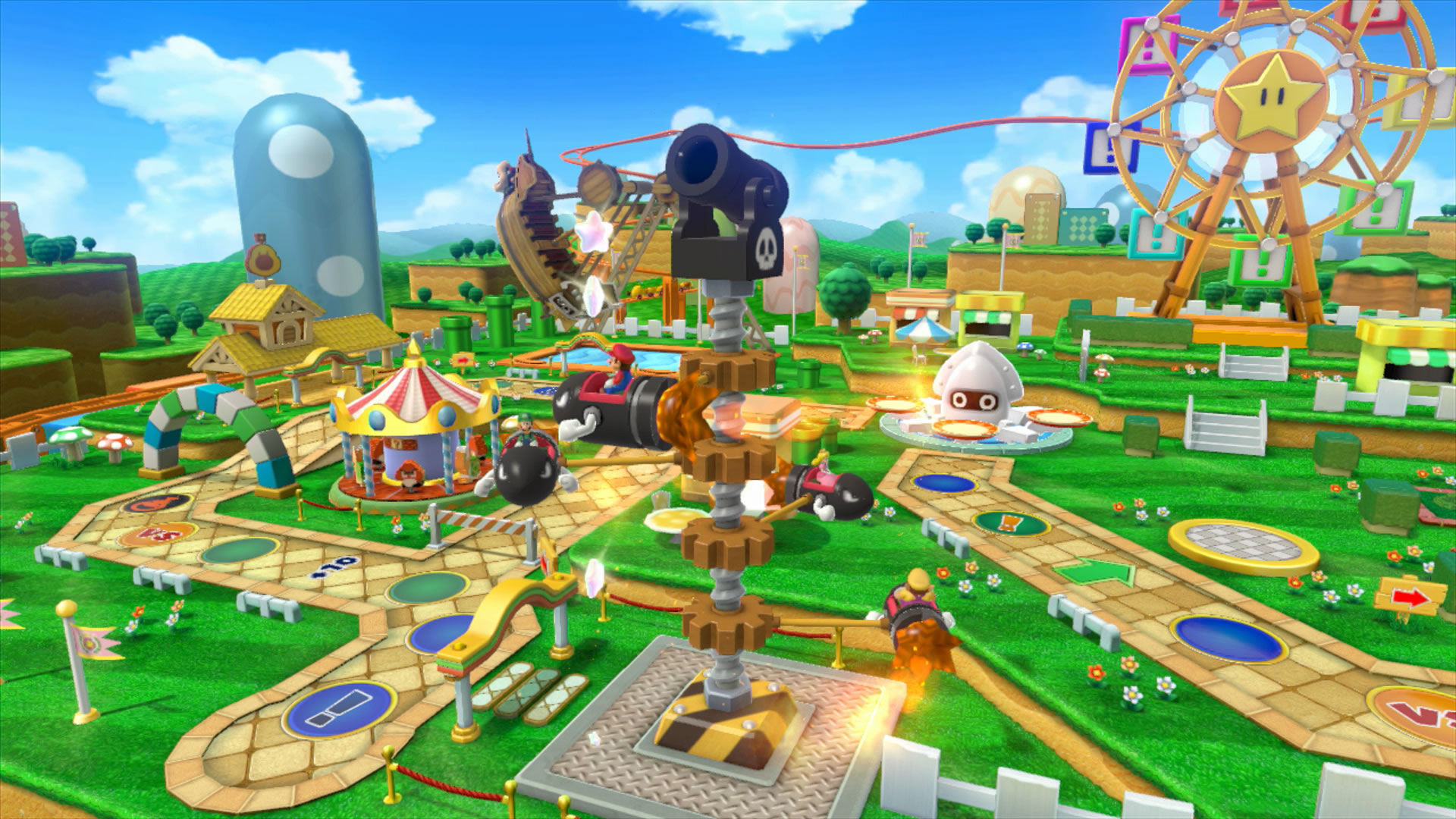Mario Party is an amorphous shape that wiggles and squirms. Each title has been a reinvention, and I’ve eagerly watched it reinvent. I worked to enunciate my words so that I could successfully use Mario Party 6 and 7’s microphone peripheral, even though the microphone only worked for a handful of games. I learned to love items, or orbs, or candies, depending on the game. I welcomed each new host, from original Toad to Bowser himself. I was, and will always be, there.
I am rambling because I do not want to say Mario Party 10 is bad. I want to say Mario Party 10 is just another example of the game evolving to better itself, but it’s not true. MP10 is more of a husk of itself; it’s molted to the point where just the shell is left.
Many of the game’s major changes come thanks to Mario Party 9, which first introduced the use of vehicles and mini stars. All players traversed the board from within the vehicle instead of exploring on their own. Mini stars replace not only coins, but the iconic golden stars themselves; the winner is the one with the most mini stars, which can be collected through mini games and special spaces. Another big change is that mini games are no longer consistently played at the end of each round. They are instead played whenever a player steps specifically on a mini game space.
This is all too much for me.
Mario Party has been known to change its theme, its host, its games, but Mario Party 10 strays too far from its roots. The boards become the main course, with no room for the dessert-like mini games. I didn’t feel like I had any control over what happened to me or my mini stars, it was all in the hands of the dice, and whoever was driving the party car at the time. Don’t get me wrong, Mario Party has always been about chance and luck, but in the past skill played a pivotal part that prevented the game from feeling too random. Anything that occurs in Mario Party 10 is all happenstance.
Of course, I’m talking as someone who has played these board games for years. I’m not the only one Mario Party caters to. The game, like every aging board game, has changed, and will keep changing.
And that isn’t really a bad thing. Mario Party introduces two new modes, Amiibo Party and Bowser Party to the franchise. Amiibo Mode utilizes Nintendo’s new figurines to play a smaller round of Mario Party. Each figure unlocks different boards or tokens when pressed to the Wii U Gamepad. Place an Amiibo on the gamepad to roll dice or to hit a number block. It’s cute, but clunky. I had to keep both my figure and my Wii Remote in both hands to use alternatively. Between rolling dice with the figures and playing mini games with the remote, I fumbled with which to use when.
Bowser mode is a much more successful category that allows one player to play as the infamous villain itself. Bowser chases Mario’s gang around a board. Either Bowser wins by stealing everyone’s hearts, or the gang wins by reaching the end of the board. This feels much more like a successful take on Mario Party than anything else in the game. There are no stars or coins to collect, but the frantic panic of winning the most hearts or traversing the most on the board brought back the best parts of the earlier Mario Parties.
I miss the obligatory celebration dance when someone earns a gold star. I miss hunting for coins and exploring boards on my own volition. I recognize change is needed to grow, but what makes Mario Party a Mario Party? I suspect those unfamiliar with the game’s history will enjoy this installment to an extent, but there were parts of the original that made the game shine. Some of its identity has been compromised in hopes of being new and improved. The attempt wasn’t really successful. The first Mario Party came out in 1998. It is 17 years old. It’s going through a life change; it doesn’t know what it is yet, and probably won’t for years.

